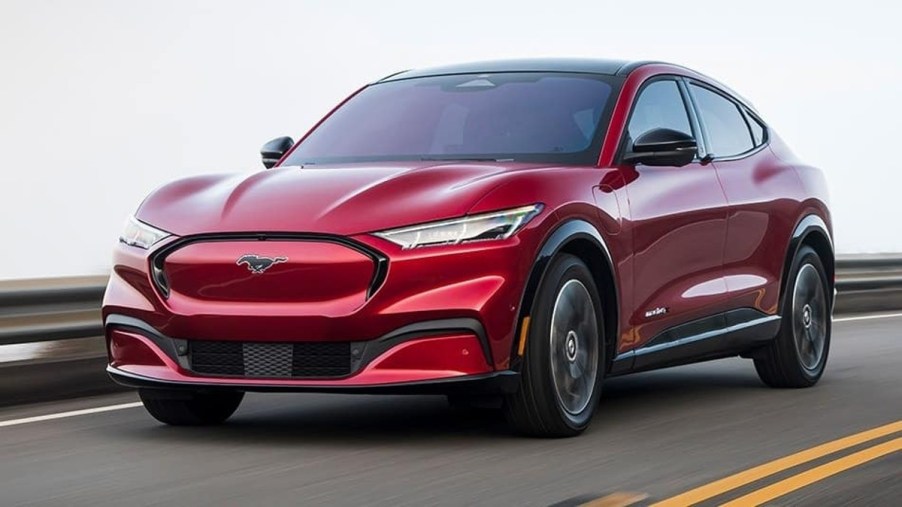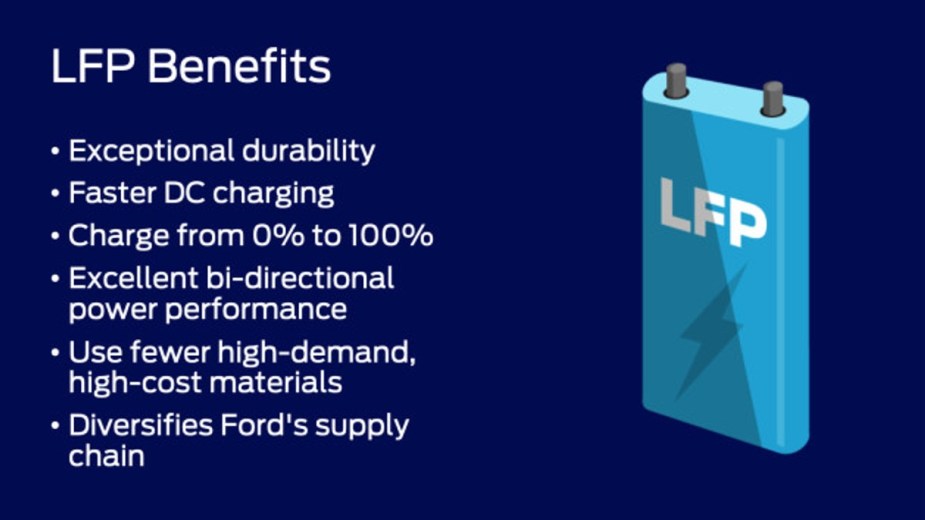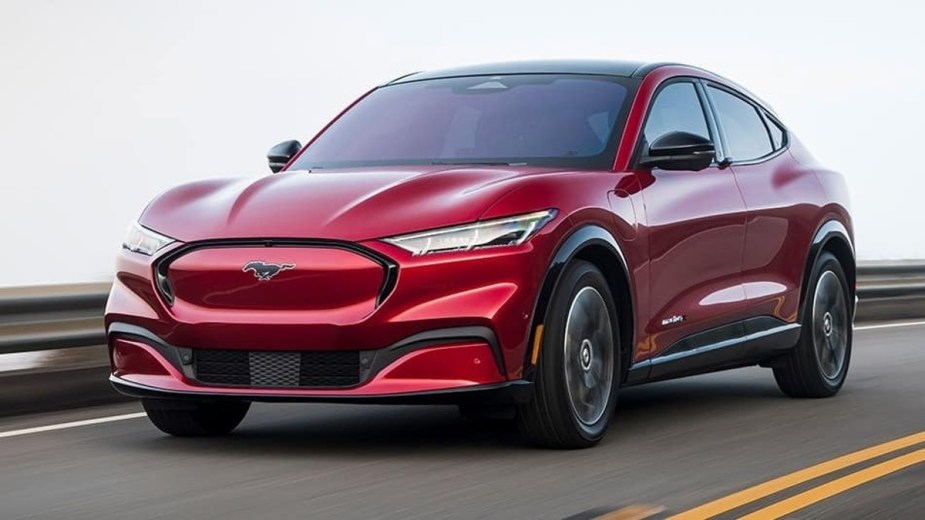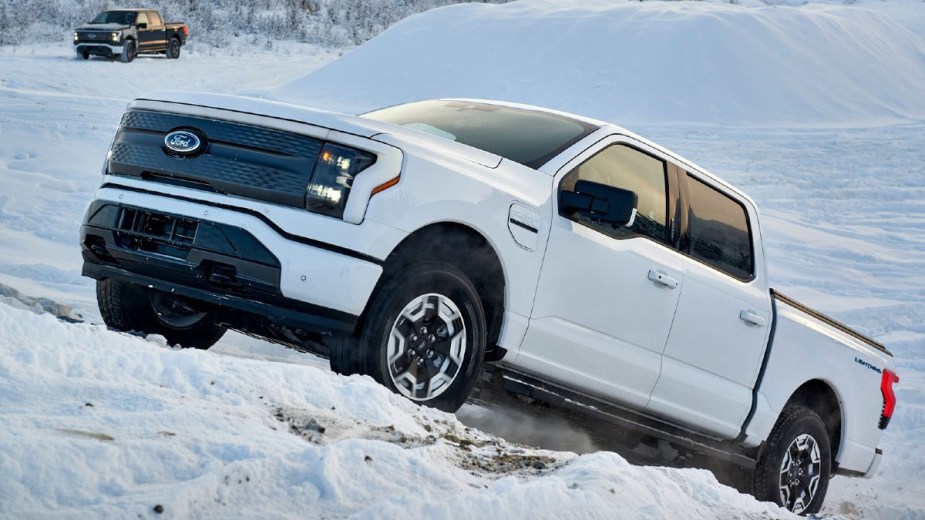
Improved LFP Battery Production Could Mean Ford EVs Will Be Cheaper Than Ever
It’s happening! As expected, automakers are beginning to find new and more affordable battery chemistry for future EVs. Ford recently announced the opening of a new EV battery plant in Michigan. This wouldn’t normally be big news, except this plant will use a new LFP battery chemistry to create Ford EV batteries for the Mustang Mach-E and F-150 Lightning.
What is LFP battery technology?
The LFP stands for lithium-iron-phosphate (remember, the periodic table has iron listed as FE), and these new batteries offer some advantages and disadvantages compared to current models. Currently, Ford uses a nickel-cobalt-manganese (NCM) battery chemistry in their electric vehicles.
What are some of the advantages of these new Ford EV batteries?

The LFP batteries we’ll see at the Ford EV battery plant in Michigan offer some benefits, including:
- Material availability
- Lower cost
- Longer lifespans
- Full recharge
Material availability is important
Many argue against the use of rare-earth metals currently used in EV batteries. Expanding the market to phase out gas-powered vehicles in favor of EVs strains the supply of these metals. Using new LFP battery chemistry will go a long way to solving this problem.
“Adding large-scale LFP to the mix will be important for Ford and other OEMs because the critical minerals are so much more readily available compared to nickel-rich chemistries. Expanding production of nickel and cobalt for the sort of vehicle production these companies are targeting just isn’t realistic by 2030.” – Sam Abuelsamid, principal e-mobility analyst at Guidehouse Insights
Could LFP battery chemistry be the future of EV technology?
These new Ford EV batteries offer the distinct advantage of accepting fast charging to 100 percent capacity of the batteries. Current NCM batteries are programmed to only accept 80 percent charge to protect the batteries during fast charging at a Level 3 public charging station. This could instantly change EV usage for road trips and longer commutes.
How much will this new Ford EV battery plant in Michigan cost?
Car and Driver tells us the new plant, located in Marshall, Michigan, will cost $3.5 billion. This new facility will begin producing LFP battery cells starting in 2026. The technology used to create these new batteries comes from the world’s highest-volume cell maker, Contemporary Amperex Technology Limited (CATL) in China.
The Ford Mustang Mach-E and F-150 Lightning base models will use the new batteries next year. To support this venture before the Marshall plant opening, Ford will buy cells directly from CATL.
Will these new Ford EV batteries offer more driving range?

Most consumers won’t notice any difference in the driving range offered. LFP battery cells will be used in Mustang Mach-E and F-150 Lightning base models next year and should offer 224 miles of driving for the Mach-E and 230 miles for the F-150. This is extremely similar to the current NCM battery driving range.
What’s the largest drawback found in these new LFP batteries?
The new batteries from the Ford EV battery plant in Michigan offer lower performance in cold weather than the current batteries. This could simply mean sending EVs with the LFP battery cells to warmer climates where the temperature rarely dips below 50 degrees.
Why is Ford adding a second EV battery chemistry?

Using a second battery type allows Ford to increase EV production more quickly. This new LFP chemistry ensures that the increase comes at a lower cost, making these EVs more affordable to consumers. Before the end of this year, Ford expects to build 600,000 EVs and expand that number to two million by the end of 2026.
Next, check out these satisfying electric SUVs, or learn more about LFP battery tech in this video below:



